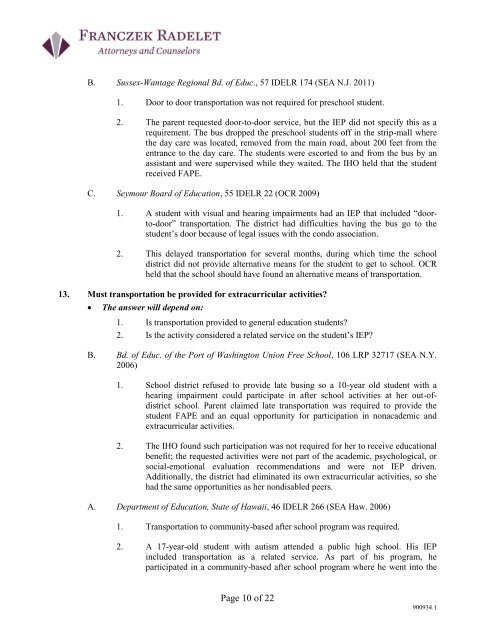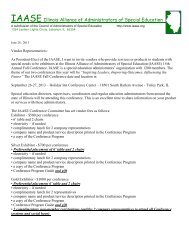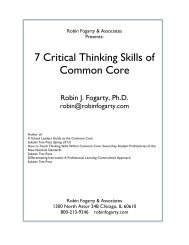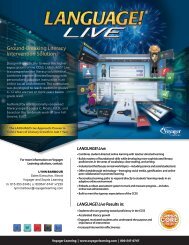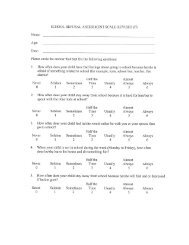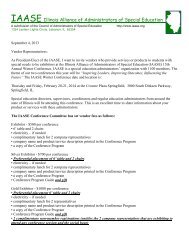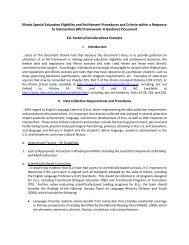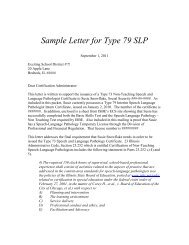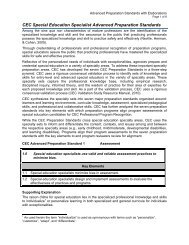Five Words Special Education Directors Fear: “Something ... - IAASE
Five Words Special Education Directors Fear: “Something ... - IAASE
Five Words Special Education Directors Fear: “Something ... - IAASE
You also want an ePaper? Increase the reach of your titles
YUMPU automatically turns print PDFs into web optimized ePapers that Google loves.
B. Sussex-Wantage Regional Bd. of Educ., 57 IDELR 174 (SEA N.J. 2011)<br />
1. Door to door transportation was not required for preschool student.<br />
2. The parent requested door-to-door service, but the IEP did not specify this as a<br />
requirement. The bus dropped the preschool students off in the strip-mall where<br />
the day care was located, removed from the main road, about 200 feet from the<br />
entrance to the day care. The students were escorted to and from the bus by an<br />
assistant and were supervised while they waited. The IHO held that the student<br />
received FAPE.<br />
C. Seymour Board of <strong>Education</strong>, 55 IDELR 22 (OCR 2009)<br />
1. A student with visual and hearing impairments had an IEP that included “doorto-door”<br />
transportation. The district had difficulties having the bus go to the<br />
student’s door because of legal issues with the condo association.<br />
2. This delayed transportation for several months, during which time the school<br />
district did not provide alternative means for the student to get to school. OCR<br />
held that the school should have found an alternative means of transportation.<br />
13. Must transportation be provided for extracurricular activities?<br />
<br />
The answer will depend on:<br />
1. Is transportation provided to general education students?<br />
2. Is the activity considered a related service on the student’s IEP?<br />
B. Bd. of Educ. of the Port of Washington Union Free School, 106 LRP 32717 (SEA N.Y.<br />
2006)<br />
1. School district refused to provide late busing so a 10-year old student with a<br />
hearing impairment could participate in after school activities at her out-ofdistrict<br />
school. Parent claimed late transportation was required to provide the<br />
student FAPE and an equal opportunity for participation in nonacademic and<br />
extracurricular activities.<br />
2. The IHO found such participation was not required for her to receive educational<br />
benefit; the requested activities were not part of the academic, psychological, or<br />
social-emotional evaluation recommendations and were not IEP driven.<br />
Additionally, the district had eliminated its own extracurricular activities, so she<br />
had the same opportunities as her nondisabled peers.<br />
A. Department of <strong>Education</strong>, State of Hawaii, 46 IDELR 266 (SEA Haw. 2006)<br />
1. Transportation to community-based after school program was required.<br />
2. A 17-year-old student with autism attended a public high school. His IEP<br />
included transportation as a related service. As part of his program, he<br />
participated in a community-based after school program where he went into the<br />
Page 10 of 22<br />
900934.1


